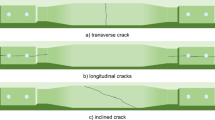Abstract
This paper extends the Petri net (PN)-based modeling of multi-elevator control system for M floors and N elevators which provides the generic PN model of the system. A new class of Petri nets is introduced known as elevator control Petri net (ECPN) for such purpose. The model of the multi-elevator control system is developed through components, whereas the model of each elevator is defined as a component. The interaction between these elevators is implemented through control places (CPs) of its PN model. A bottom-up modeling approach is adopted by adding the CPs and using the arc-addition operator to the single-elevator modules. Mixture of collective and selective approaches, that is, collective-selective/up–down approach, is used for the control. The proposed Petri net class in the paper resolves the bunching problem among multiple elevators. The bunching problem is tackled by introducing the request places with the capacity of one in the ECPN. A case study of ECPN is also presented by taking the two elevators and four-floor model, and it is analyzed by the incidence matrix–based invariant method.





Similar content being viewed by others
References
Cassandras CG, Lafortune S (2008) Introduction to discrete event systems, 2nd edn. Springer, New York
Ramadge PJ, Wonham WM (1989) The control of discrete event systems. Proc IEEE 77:81–98
Sandor M, ichi Ken A, Nakagawa M, Sudo T (2008) Recent trends in elevator group control systems. In: The 23rd International Technical Conference on Circuits/Syst, Computers and Communications (ITC-CSCC 2008), pp 697–700
Yang S, Tai J, Shao C (2009) Dynamic partition of elevator group control system with destination floor guidance in up-peak traffic. J Comput 4(1):45–52
Alvaro A, Daniel M, de Carvalho GC, Llanos CH (2010) Modeling of an elevator group control system using programmable logic control and destination control system. ABCM Symp Ser Mechatron 4:433–444
Sorsa J, Hakonen H, Siikonen ML (2005) Elevators selection with destination control system. Elevators Technol
Kim CB, Seong KA, Lee-Kwang H, Kim JO (1998) Design and implementation of a fuzzy elevator group control system. IEEE Trans Syst Man Cybern Part A 28(3):277–287
Liu J, Liu Y (2007) Ant colony algorithm and fuzzy neural network based intelligent dispatching algorithm of an elevator group control system. IEEE Int Conf Control Autom
Ikeda K, Suzuki H, Kita H, Markon S (2008) Examplar-based control of multi-car elevators and its multiple-objective optimization using genetic algorithm. Conference system computers and communication
Nikovski D, Brand M (2004) Exact calculation of expected waiting times for group elevator control. Mitsubishi electric research laboratories
Yang X, Zhu Q, Xu H (2008) Design and practice of an elevator control system based on PLC. Workshop on Power Electronics and Intelligent Transportation System
Reisig W (1991) Petri nets, an introduction, 2nd edn. Springer, Berlin
Peterson JL (1981) Petri net theory and the modeling of systems. Prentice-Hall, Englewood Cliffs
Ahmad F, Huang HJ, Wang XL (2011) Analysis of the Petri net model of parallel manufacturing processes with shared resources. Inf Sci 181:5249–5266
Ahmad F, Khan SA (2013) Specification and verification of safety properties along a crossing region in a railway network control. Appl Math Model 37(7):5162–5170
Tasi C-J, Fu L-C, Hsu Y-J (1992) Modeling and simulation for flexible manufacturing systems using Petri net. 2nd Int Conf Automat 4:31–38
Lin C-H, Fu L-C (1996) Petri net based dynamic scheduling of an elevator system. IEEE Int Conf Robotics Automat 1:192–199
Miyagi PE, Villani E, Gustin GDB, Maruyama N, Santos Filho DJ (1999) Petri net approach for modelling system integration in intelligent buildings. Presented at COBEM 99—15th Brazilian Congress of Mechanical Engineering, pp 22–26
Ho Y-W, Fu L-C (2000) Dynamic scheduling approach to group control of elevator systems with learning ability. Proceedings of the 2000 IEEE International Conference on Robotics & Automation, San Francisco
Huang Y-H, Fu L-C (1998) Dynamic scheduling of elevator systems over hybrid Petri net/rule modeling. IEEE International Conference on Robotics & Automation Leuven
Cho YC, Gagov Z, Kwon WH (2000) Timed Petri net based approach for elevator group controls. Trans Control Autom Syst Eng 2(2):121–130
Strakosch GR (1998) Vertical transportation: elevators and escalators. Wiley, New York
Barney G, dos Santos SM (1985) Elevator traffic analysis, design and control, 2nd edn. Institution of Engineering and Technology, England
Munoz DM, Llanos CH, Ayala-Rincon M, van Els RH (2008) Distributed approach to group control of elevator systems using fuzzy logic and FPGA implementation of dispatching algorithms. Eng Appl Artif Intell 21:1309–1320
Kotb YT, Beauchemin SS, Barron JL (2007) Petri net-based cooperation in multi-agent systems. Fourth Canadian Conference on Computer and Robot Vision CRV 07, IEEE 2007, pp 123–130
Krogh BH (1987) Controlled Petri nets and maximally permissive feedback logic. Proceedings of the 25th Annual Allerton Conference. University of Illinois, Urbana, pp 317–326
Ichikawa A, Hiraishi K (1988) Analysis and control of discrete event systems represented by Petri nets. Discrete event systems: models and applications, (Varaiya P, Kurzhanski AB (eds)) Lecture notes in control and information sciences. Springer, New York, 103:115–134
Ahmad F, Khan SA (2012) Module-based architecture for periodic job-shop scheduling problem. Comput Math Appl 64(1):1–10
Girault C, Valk R (2010) Petri net of systems engineering: a guide to modeling, verification and applications, 2nd edn. Springer, Berlin
Capkovic F (2007) Modelling analysing and control of interactions among agents in MAS. Comput Inf 26:507–541
Petri Net Toolbox for MATLAB. http://www.ac.tuiasi.ro/pntool/
Author information
Authors and Affiliations
Corresponding author
Rights and permissions
About this article
Cite this article
Ahmad, F., Fakhir, I., Khan, S.A. et al. Petri net-based modeling and control of the multi-elevator systems. Neural Comput & Applic 24, 1601–1612 (2014). https://doi.org/10.1007/s00521-013-1391-1
Received:
Accepted:
Published:
Issue Date:
DOI: https://doi.org/10.1007/s00521-013-1391-1




